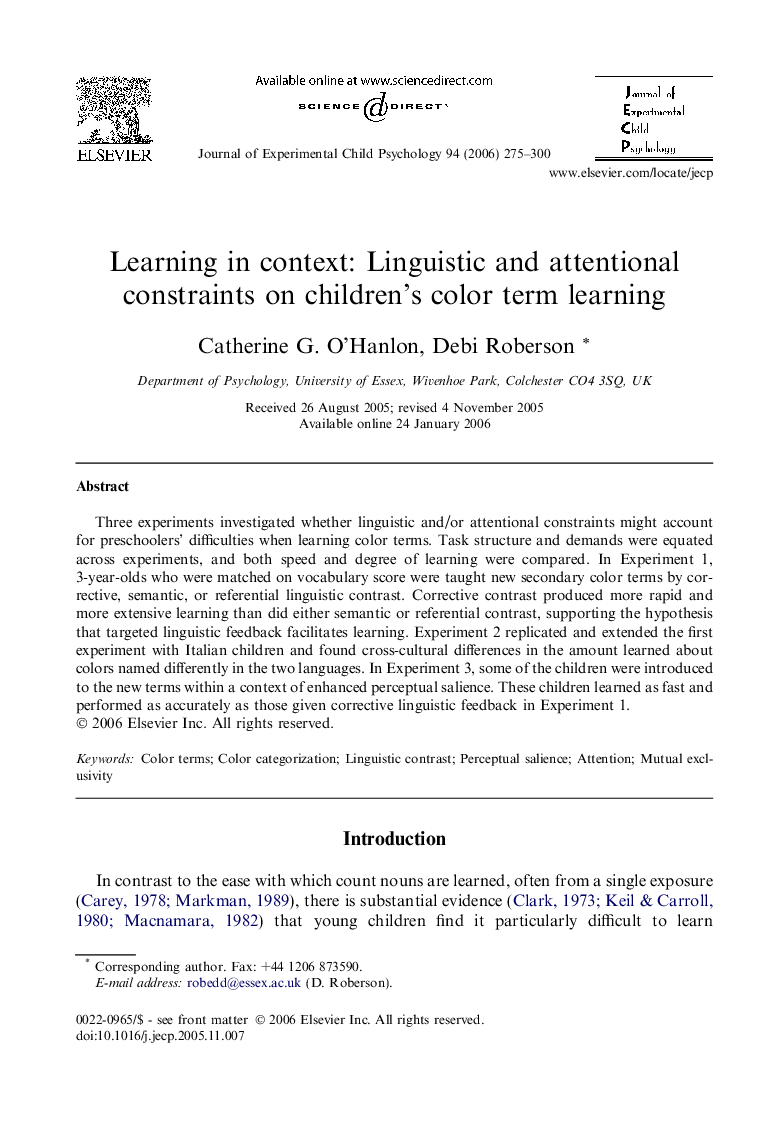| Article ID | Journal | Published Year | Pages | File Type |
|---|---|---|---|---|
| 918849 | Journal of Experimental Child Psychology | 2006 | 26 Pages |
Three experiments investigated whether linguistic and/or attentional constraints might account for preschoolers’ difficulties when learning color terms. Task structure and demands were equated across experiments, and both speed and degree of learning were compared. In Experiment 1, 3-year-olds who were matched on vocabulary score were taught new secondary color terms by corrective, semantic, or referential linguistic contrast. Corrective contrast produced more rapid and more extensive learning than did either semantic or referential contrast, supporting the hypothesis that targeted linguistic feedback facilitates learning. Experiment 2 replicated and extended the first experiment with Italian children and found cross-cultural differences in the amount learned about colors named differently in the two languages. In Experiment 3, some of the children were introduced to the new terms within a context of enhanced perceptual salience. These children learned as fast and performed as accurately as those given corrective linguistic feedback in Experiment 1.
